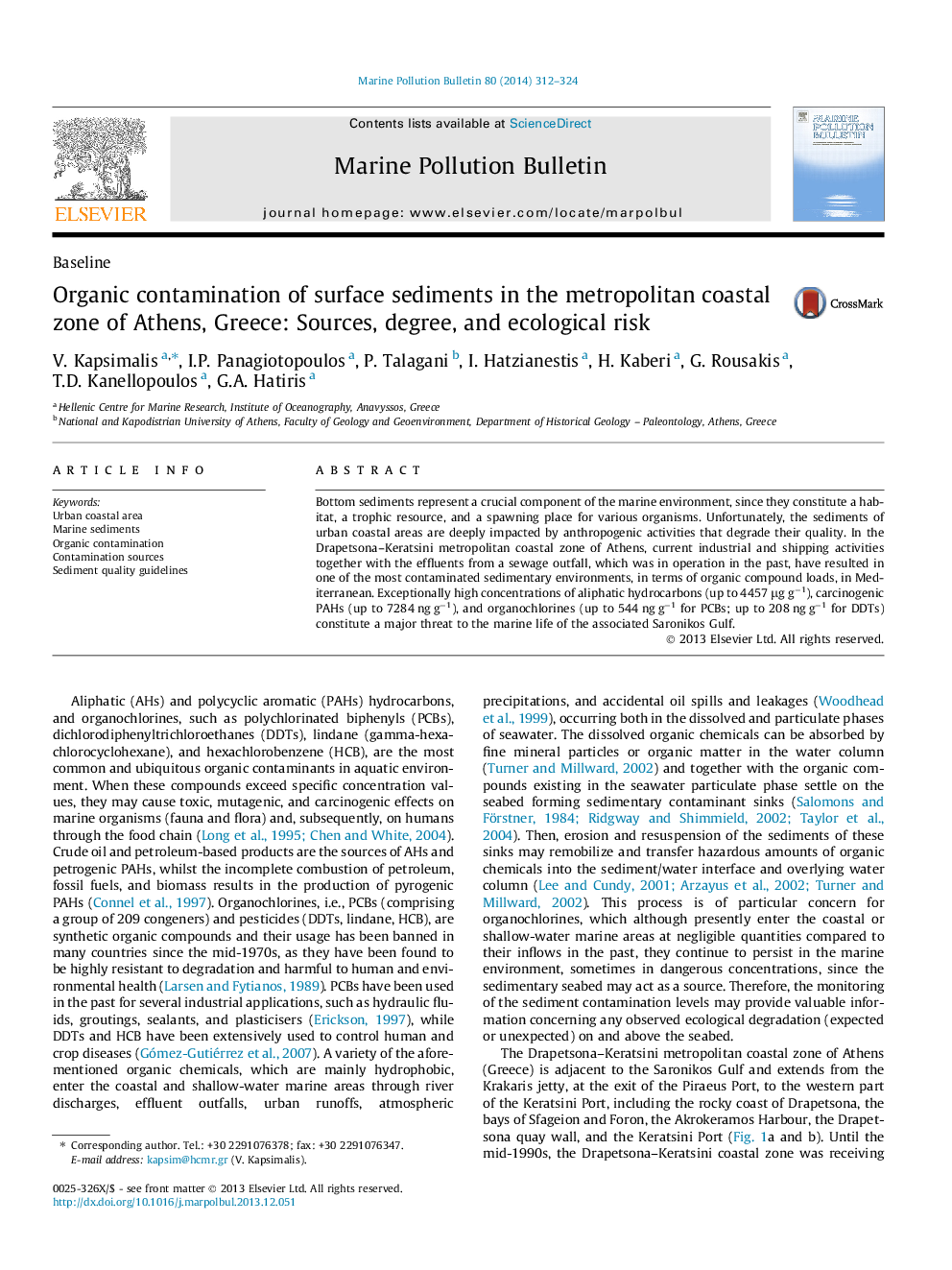| Article ID | Journal | Published Year | Pages | File Type |
|---|---|---|---|---|
| 6358103 | Marine Pollution Bulletin | 2014 | 13 Pages |
Abstract
Bottom sediments represent a crucial component of the marine environment, since they constitute a habitat, a trophic resource, and a spawning place for various organisms. Unfortunately, the sediments of urban coastal areas are deeply impacted by anthropogenic activities that degrade their quality. In the Drapetsona-Keratsini metropolitan coastal zone of Athens, current industrial and shipping activities together with the effluents from a sewage outfall, which was in operation in the past, have resulted in one of the most contaminated sedimentary environments, in terms of organic compound loads, in Mediterranean. Exceptionally high concentrations of aliphatic hydrocarbons (up to 4457 μg gâ1), carcinogenic PAHs (up to 7284 ng gâ1), and organochlorines (up to 544 ng gâ1 for PCBs; up to 208 ng gâ1 for DDTs) constitute a major threat to the marine life of the associated Saronikos Gulf.
Related Topics
Physical Sciences and Engineering
Earth and Planetary Sciences
Oceanography
Authors
V. Kapsimalis, I.P. Panagiotopoulos, P. Talagani, I. Hatzianestis, H. Kaberi, G. Rousakis, T.D. Kanellopoulos, G.A. Hatiris,
